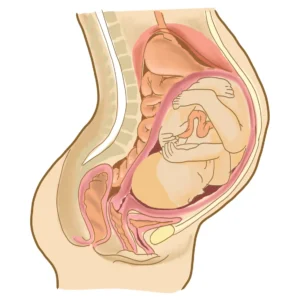Plan your journey to parenthood with our IVF Pregnancy Calculator. An accurate and user-friendly tool for hopeful parents.
IVF Pregnancy Calculator
Date of Transfer:
Type of Embryo Transfer:
Disclaimer: Our IVF Pregnancy Calculator provides estimates based on input data. Consult with a healthcare professional for personalized advice and guidance.
You may also interested in:
- Body Fat Calculator
- Dog Pregnancy Calculator
- Word Counter Tool
- Case Converter
- Average Percentage Calculator
- Fake Name Generator
- Fancy Text Generator
- Percentage To GPA
What is an IVF Pregnancy Calculator?

An IVF Pregnancy Calculator is a handy tool specifically designed for women who conceive through in-vitro fertilization (IVF). Unlike natural pregnancies where ovulation is the key date, IVF pinpoints conception to the embryo transfer date.
This calculator takes that date and, depending on the type of embryo transferred (fresh 3-day, fresh 5-day, or frozen blastocyst), uses specific formulas to estimate your due date. It’s important to remember, like any due date calculator, it’s an estimate, and your doctor will have the most accurate prediction based on ultrasounds and measurements.
But for expecting parents eager to mark their calendars and count down the days, an IVF Pregnancy Calculator can be a source of excitement and anticipation.
IVF Pregnancy Calculators rely on a precise start date: the embryo transfer date. Unlike natural conceptions, where ovulation is the key marker, IVF pinpoints the exact moment of conception. The calculator then factors in the embryo’s developmental stage at transfer to estimate the due date.
Here’s the general breakdown:
Fresh 3-day embryo transfer: Add 263 days to the transfer date.
Fresh 5-day embryo transfer (blastocyst): Add 261 days to the transfer date.
Frozen blastocyst transfer: Add 261 days to the transfer date.
Additional considerations for other IVF types:
Donor egg or donor embryo cycles: Count 266 days from the egg retrieval date.
Natural cycle IVF: Count 280 days from the first day of your last menstrual period, as ovulation timing is used.
What day is the best day to transfer your embryo?
Unfortunately, there’s no single “best” day for embryo transfer as it depends on several factors. Traditionally, transfers happened on day 3 after fertilization (cleavage stage). Now, day 5 (blastocyst stage) is often preferred due to:
1) Higher pregnancy rates: Blastocysts have reached a more advanced stage, potentially indicating better developmental potential.
2) Improved embryo selection: By day 5, some embryos may not survive, allowing for the selection of those with higher implantation chances.
3) Reduced risk of multiples: Fewer embryos are typically transferred at day 5, lowering the chance of twins or triplets.
However, day 3 transfers might be suitable in specific cases like limited embryos or certain fertility issues. Ultimately, your doctor will consider your individual factors and recommend the best transfer day for maximizing your chances of success.
How does this tool calculate IVF Pregnancy?

This tool calculates IVF Pregnancy by being a wizard of dates and embryos. You feed it the crucial date of your embryo transfer or egg retrieval, and like magic, it predicts future milestones. It’s like having a crystal ball for fertility!
IVF Pregnancy Calculator tool taps into the science of reproductive calendars, estimating due dates and the end of the first trimester. No hocus-pocus, just a smart sidekick simplifying the IVF journey. Remember, it’s not clairvoyant, but it sure adds a sprinkle of excitement to the fertility adventure. Trust the tool – your digital companion on this rollercoaster ride to parenthood!
Why does RMA only do frozen embryo transfers?
RMA opts for frozen embryo transfers as a strategic fertility play. It’s like putting the embryo on pause before the grand implantation. Freezing lets the doctors fine-tune the timing, syncing it with your body’s natural rhythm. Think of it as orchestrating a perfect duet between embryo and uterus.
This method increases success rates by giving the embryo an ideal environment to flourish. Like defrosting a cake for a celebration, it ensures the embryo is ready to thrive in the welcoming uterine party. So, RMA dances with frozen transfers, ensuring the best chances for a successful pregnancy performance.
What is the difference between fresh and frozen transfers?

The key difference between fresh and frozen embryo transfers lies in timing and embryo preparation:
Fresh transfer:
1) Embryo transferred 3-5 days after fertilization (cleavage or blastocyst stage).
2) Faster process, potentially reducing anxiety, and cost.
3) May experience hormonal imbalances from stimulation medications, impacting uterine lining receptivity.
Frozen transfer:
1) Embryo vitrified (cryopreserved) after development and thawed before transfer (usually blastocyst stage).
2) Allows time for hormonal regulation and optimal uterine lining preparation.
3) Higher pregnancy success rates and lower miscarriage risk compared to fresh transfers in some studies.
4) Offers flexibility in scheduling transfers and preserving embryos for future pregnancies.
Ultimately, the best choice depends on individual factors and your doctor’s recommendations. They’ll consider your age, ovarian reserve, embryo quality, and personal preferences to guide you toward the transfer method with the highest chance of success.
What information do I need to enter?
Here’s the essential information you’ll need to input into an IVF due date calculator:
1. Type of IVF cycle: Specify whether you had a fresh embryo transfer (3-day or 5-day), a frozen embryo transfer (blastocyst), or a donor egg or embryo cycle.
2. Date of embryo transfer: Enter the exact date your embryos were transferred into your uterus.
3. Date of egg retrieval (if applicable): If you had a fresh IVF cycle or a donor egg cycle, provide the date of your egg retrieval.
4. Number of embryos transferred (optional): Some calculators may ask for this information to refine the estimated due date, but it’s not always mandatory.
Once you’ve entered this information, the calculator will automatically apply the appropriate formula and provide you with an estimated due date for your IVF pregnancy.
How accurate are IVF Pregnancy Calculators?

While IVF pregnancy calculators are handy tools, it’s important to understand their limitations:
Accuracy: They offer estimations, not guarantees. Due to slight variations in fetal development, even with a precise transfer date, your baby might arrive a few days earlier or later than the calculated date.
Ultrasound confirmation: The most accurate due date comes from early ultrasounds that measure the crown-rump length of the embryo. This measurement becomes less reliable later in pregnancy, so the initial ultrasound estimate is crucial.
Individual factors: Age, medical history, and multiple embryo transfers can influence gestational development, potentially affecting the calculator’s accuracy.
Ultimately, treat the calculator’s output as a helpful guide, not a definitive answer. Your doctor, based on ultrasound measurements and your specific circumstances, will provide the most reliable due date prediction.
How is my due date calculated with the IVF pregnancy Calculator?
Calculating your due date is similar to marking the calendar for your baby’s great entrance. The Naegele’s Rule is a well-known strategy used by the majority of doctors. Start with the starting day of your last period, add 280 days (or 40 weeks), and you’ve got your due date!
It’s similar to expecting when your baby will make his or her first appearance. Remember, though, that this method requires a 28-day cycle. If your cycle resembles a free-spirited dancer, the due date may shift slightly. It’s a well-known formula, but each pregnancy has its own performance, so enjoy the ride! Visit our website again for more calculators and tools.